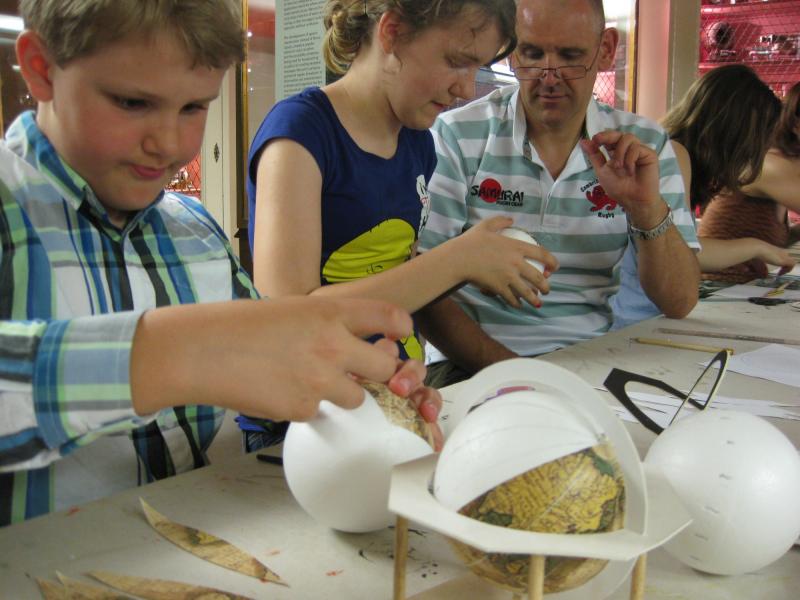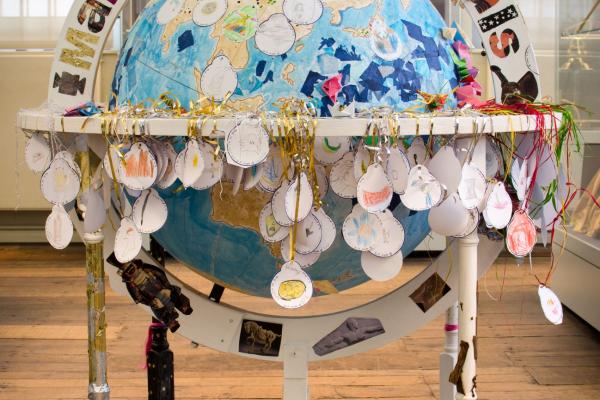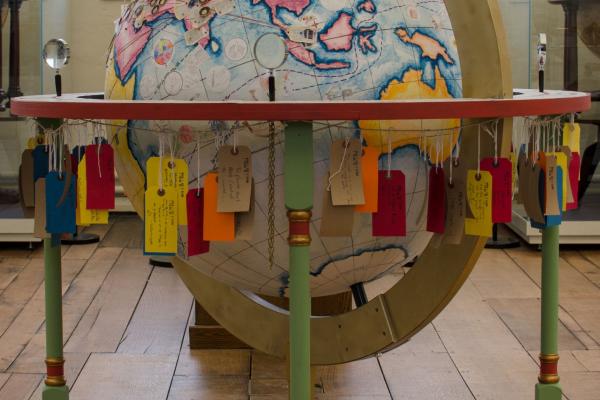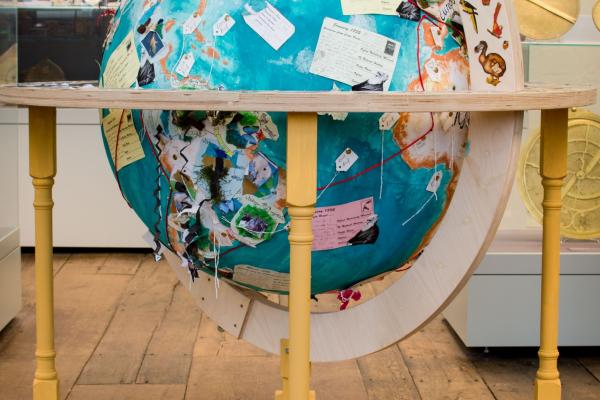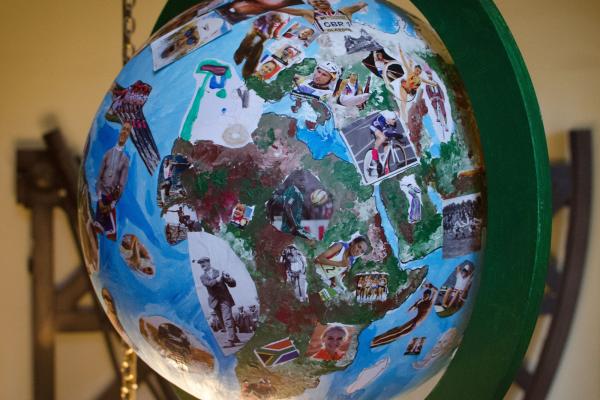Renaissance Globe Project Exhibition
The five globes created during the project were brought together for exhibition at the History of Science Museum. The exhibition opened with a celebration, bringing together the globe teams including volunteers and staff from the four partner museums.
Introduction
This project has been led by the History of Science Museum in partnership with the Ashmolean Museum, the Museum of Oxford, the Oxford University Museum of Natural History and the Langley Academy. Inspired by the 500th anniversary of the cosmographer, map and instrument maker Gerard Mercator, it was linked with the special exhibition 'The Renaissance in Astronomy: Books, Globes and Instruments of the 16th Century'.
The project has included a programme of workshops for schools and events for families and other audiences across four museums, celebrating the invention of the printed globe and the traditional craft of globe-making. Community volunteers have played an important part in the project with a team of 20 volunteers supporting delivery and working behind the scenes.
Following the construction of the first known terrestrial globe by Martin Behaim in c.1492, new methods of creating the printed image played a part in establishing a new craft of globe-making. Paper gores carrying the printed image could be cut to shape and pasted onto a sphere to recreate the world in 3-dimensions. The gores could be readily updated as new discoveries were made. The mid-sixteenth century cartographer Gerard Mercator was a pioneer in the art and science of globe-making.
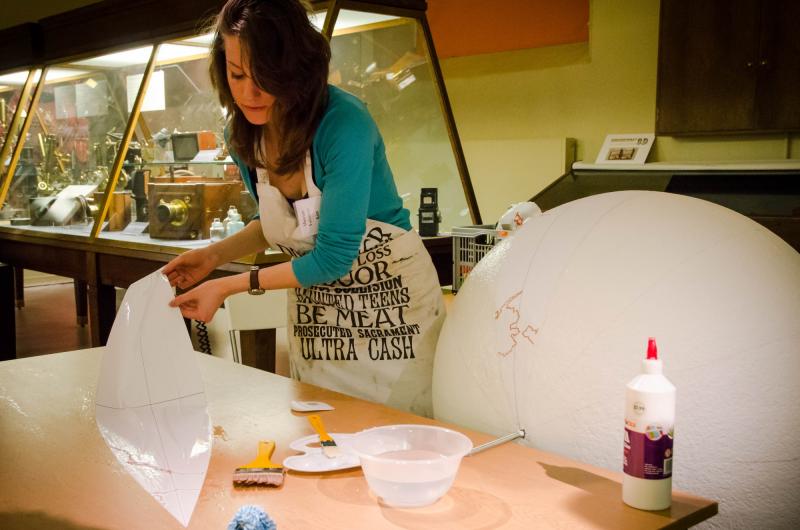
Mercator would have created a pasteboard sphere around a former. The spheres would have then been cut in half, removed from the former, and rejoined around a wooden surrounding structure. Our globes were built using a base of expanded polystyrene onto which, following the traditional method, sets of paper gores were pasted. The globes were mounted in bespoke wooden frames. Each globe has been worked upon by visitors and volunteers throughout a series of public events undergoing a transformation inspired by the individual collections of the participating museums to re-imagine the globe in the spirit of the Renaissance.
Globe modelling workshops have provided opportunities for school pupils, adults and families to learn about the traditional craft of globe-making and to try their hand at making a small-scale model globe complete with a wooden stand of the style first introduced by Mercator in the early 16th-century.
